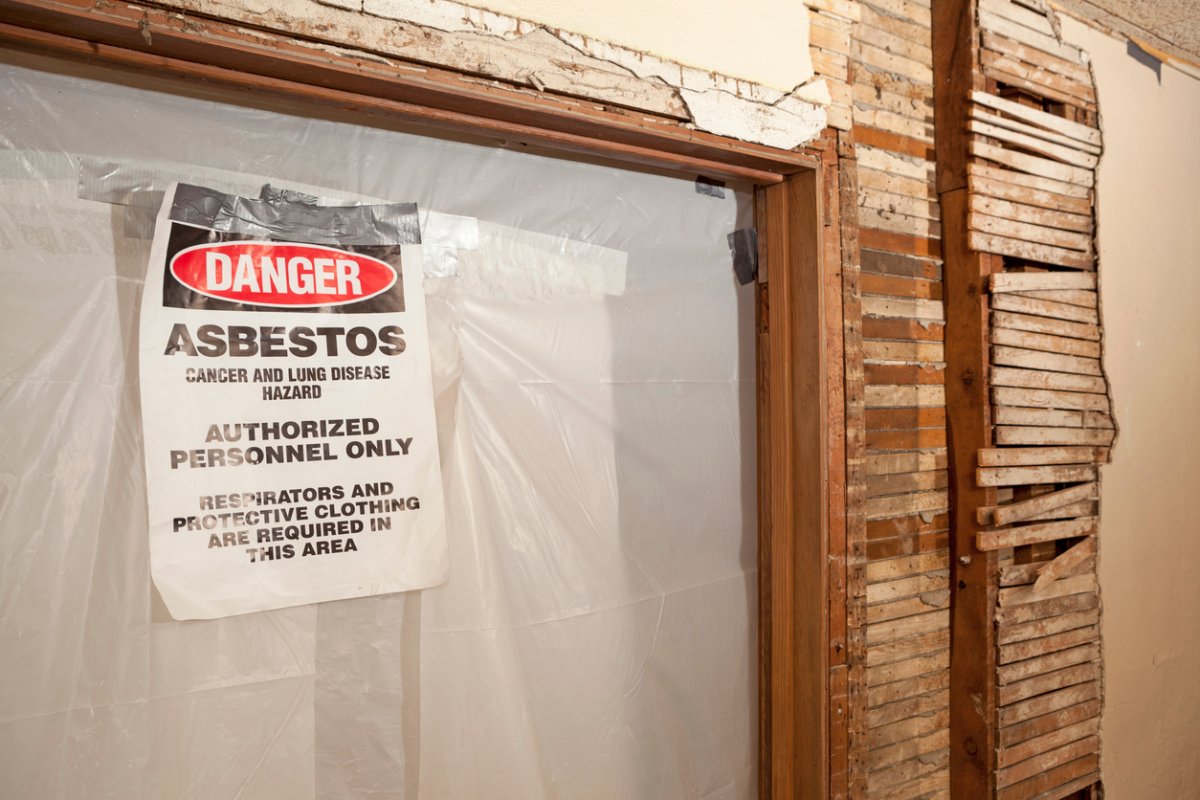We may earn revenue from the products available on this page and participate in affiliate programs. Learn More ›
Older homes are rife with charm, personality, and character. Unfortunately, they may also have an unsavory, downright dangerous skeleton in the closet: asbestos. This mineral, valued for its strength, sound absorption, and fire-retardant properties, used to be widely used in building materials. That changed in the mid-1970s, when asbestos exposure became linked to severe health issues, including lung cancer, mesothelioma, and asbestosis (a progressive debilitating lung disease). In the 1970s, the Environmental Protection Agency (EPA) began to restrict the manufacture of various asbestos-containing products. As builders sought out other materials, the use of asbestos in residential construction declined, but homes built before 1980 may still contain asbestos—and according to the U.S. Census’s 2019 American Community Survey, almost 50 percent of homes in the U.S. were built before 1980.
Today, according to the EPA, no level of exposure to asbestos is considered safe, and testing and removal should be completed by licensed professionals. While undisturbed asbestos is unlikely to pose a health risk, asbestos used in building materials that have been damaged or otherwise stirred up does present a real danger. If you live in an older house, it’s wise to be aware of areas where there may still be asbestos, especially if you’re planning to repair or renovate your house.
1. Roofing and Siding
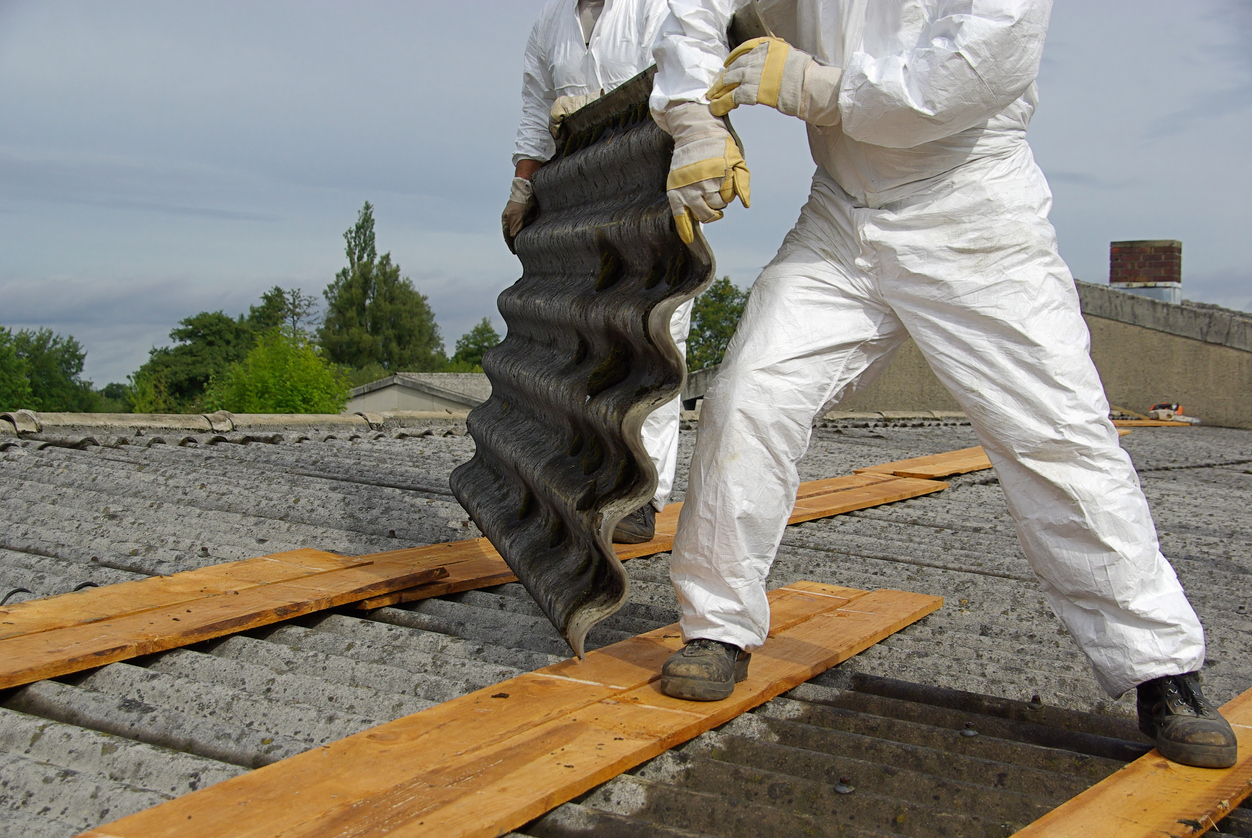
Asbestos is extremely resistant to heat, fire, and electrical conductivity, which made it a common (and often required) component in many types of siding and roofing shingles. If your roof is old enough to contain asbestos, it’s past due for replacement. Beware, however, that removal of asbestos-containing roof shingles or siding should be handled only by a trained and accredited asbestos professional.
RELATED: What Does Asbestos Look Like? Beware of This Danger Hiding in Plain Sight
2. Flooring

Another common source of asbestos in the home is flooring, especially vinyl floor tiles, the backing on vinyl sheet flooring, and flooring adhesives. According to the EPA, if your floor tiles were installed prior to 1981, there’s a good chance they contain some asbestos. If an asbestos-containing floor has been damaged—if, for instance, it has been scraped or gouged—dusting, sweeping, or vacuuming it could release dangerous asbestos fibers. Even if a floor containing asbestos is in good shape, you may want to consider sealing or encapsulating it. If you choose instead to remove and replace it, have the work done by a qualified professional.
RELATED: All You Need to Know About Asbestos Floor Tiles
3. Pipe Insulation
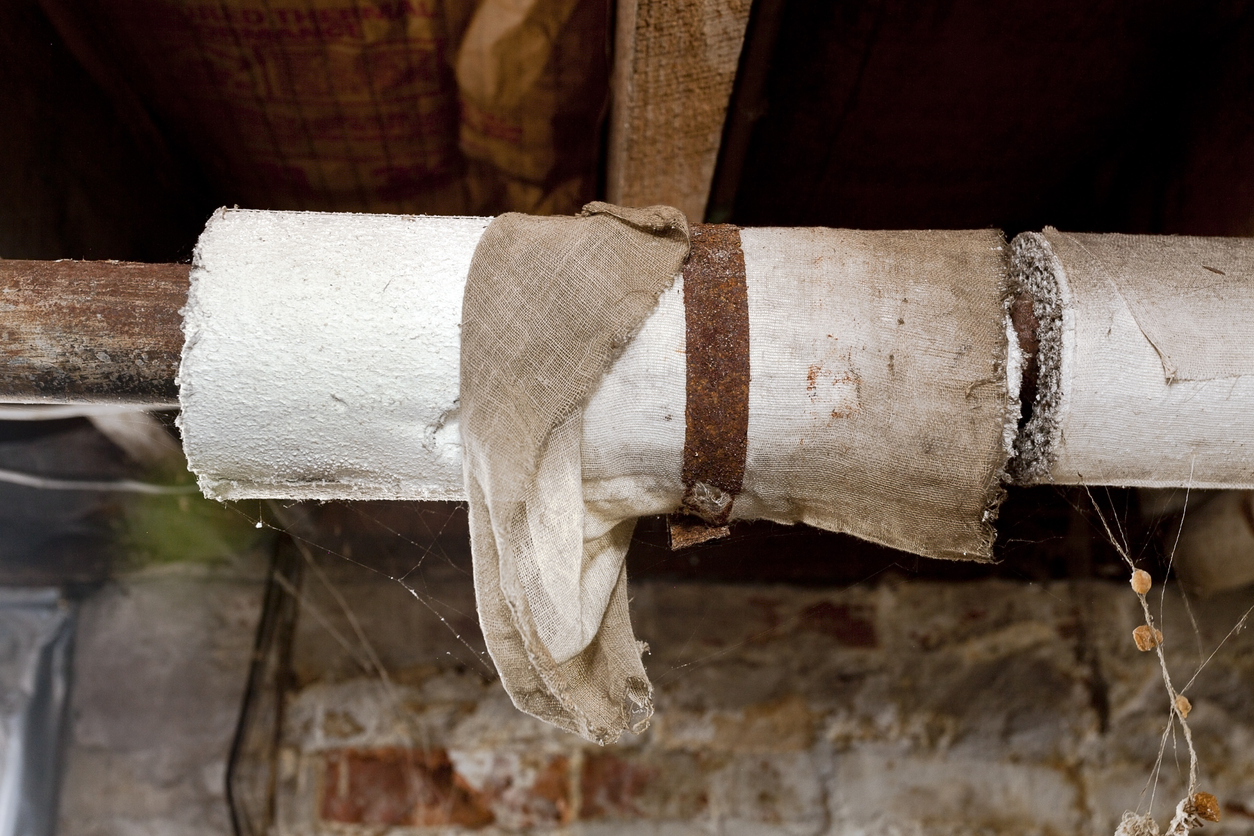
Because asbestos is heat-resistant, it was typically used to insulate hot water pipes as well as steam pipes in heating systems. In some cases, the pipes were coated directly with asbestos material, and in other instances, the pipes were covered with an asbestos blanket or tape. As with other types of asbestos, leave the covering alone if it’s in good shape, or have it encapsulated. If it’s ripped or torn, have it professionally removed and replaced.
RELATED: How To: Test for Asbestos
4. Wallboard and Joint Compound
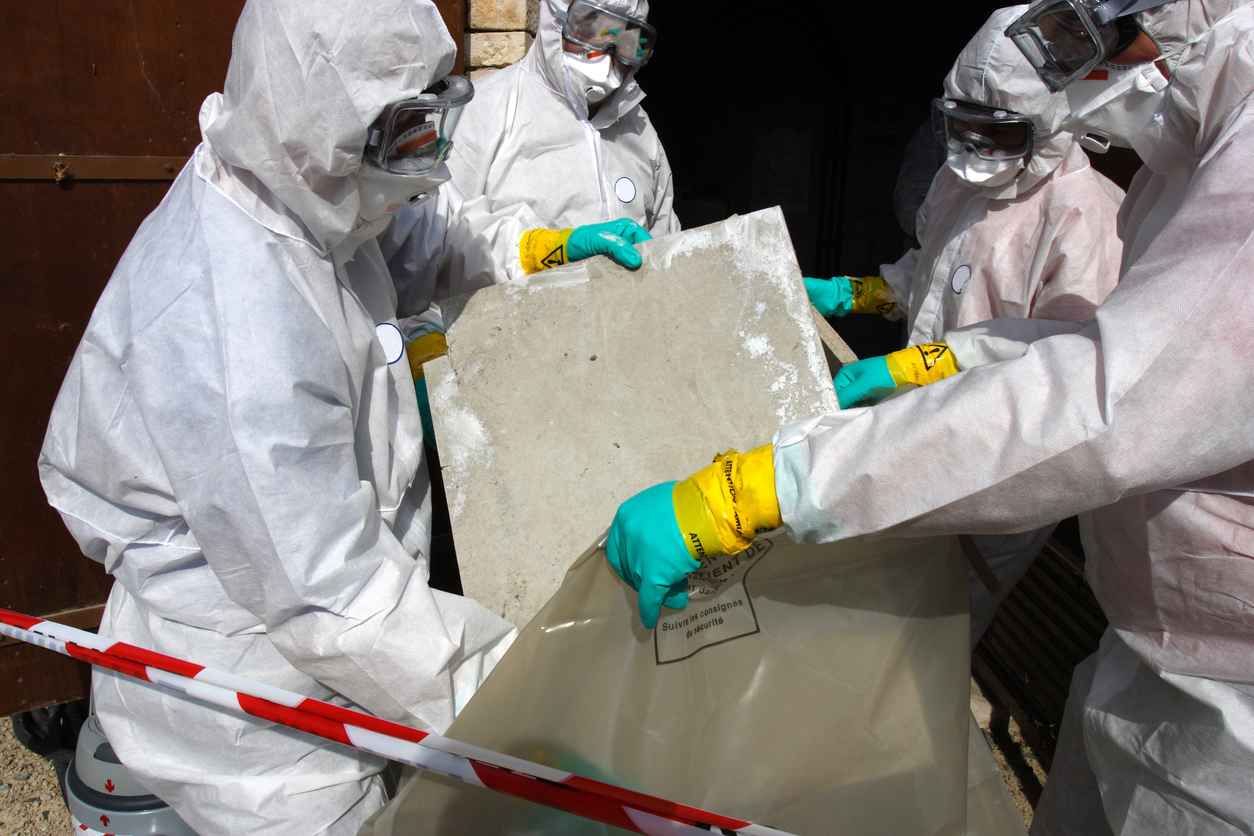
Many types of wallboard and joint compound, such as those around wood-burning stoves and fireplaces, incorporated asbestos fibers for strength and flame resistance. Even something as simple as patching a hole or sanding a rough patch in a wall could release asbestos fibers and dust into the air. If you’re pondering a remodeling or home improvement project and you live in a home with interior walls that were finished before the mid-1980s, it’s smart to call in an asbestos inspector before beginning.
RELATED: 11 Ticking Time Bombs in Your House—and What to Do About Them
5. Popcorn Ceilings
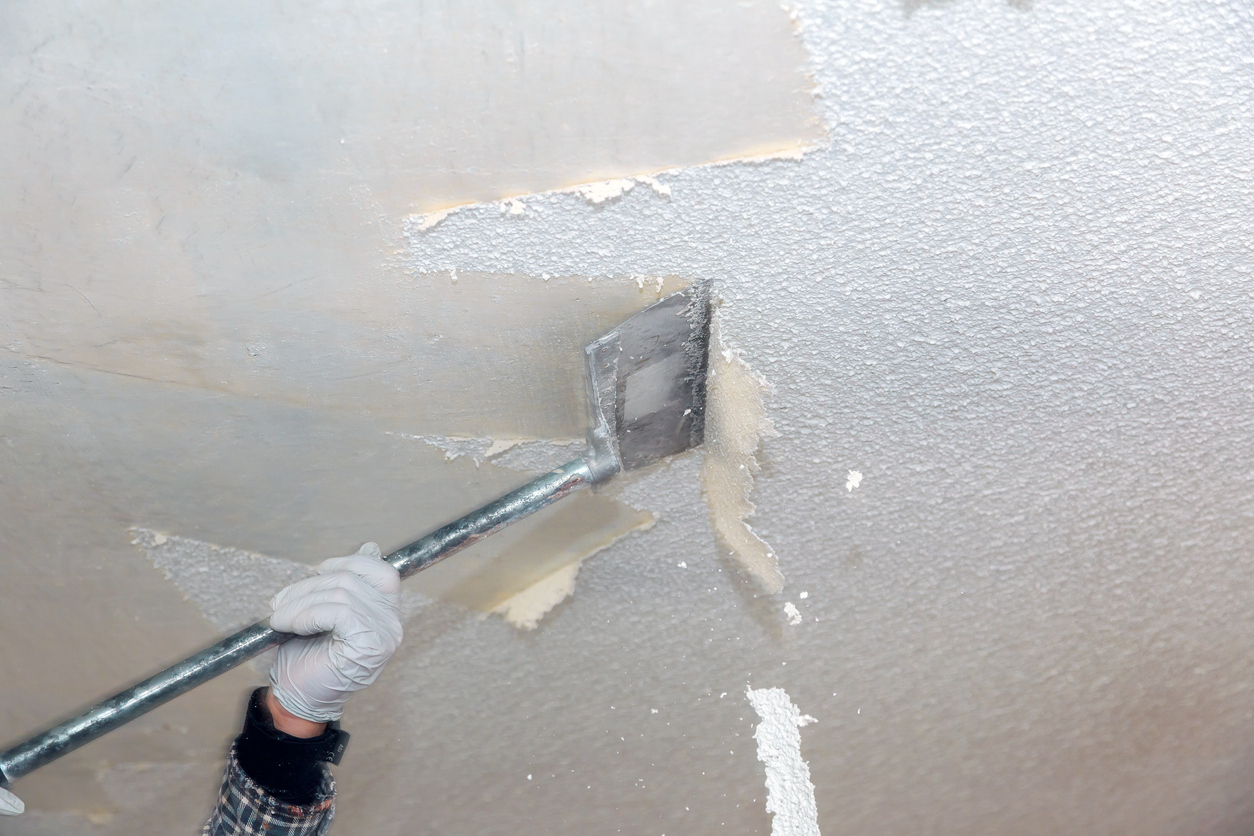
Whether you love them because they’re “retro kitsch” or hate them because they’re outdated and ugly, popcorn ceilings are extremely common in homes built from the late 1960s through the early 1980s. But this decorative texture has a darker side: The coating was typically made from sprayed-on asbestos fibers or textured paint infused with asbestos. If you have a popcorn ceiling, consider sealing it. If you’re determined to remove it, have a professional test it first, and if asbestos is found, hire a qualified professional for removal.
RELATED: How Much Does Popcorn Ceiling Removal Cost?
6. Wallpaper
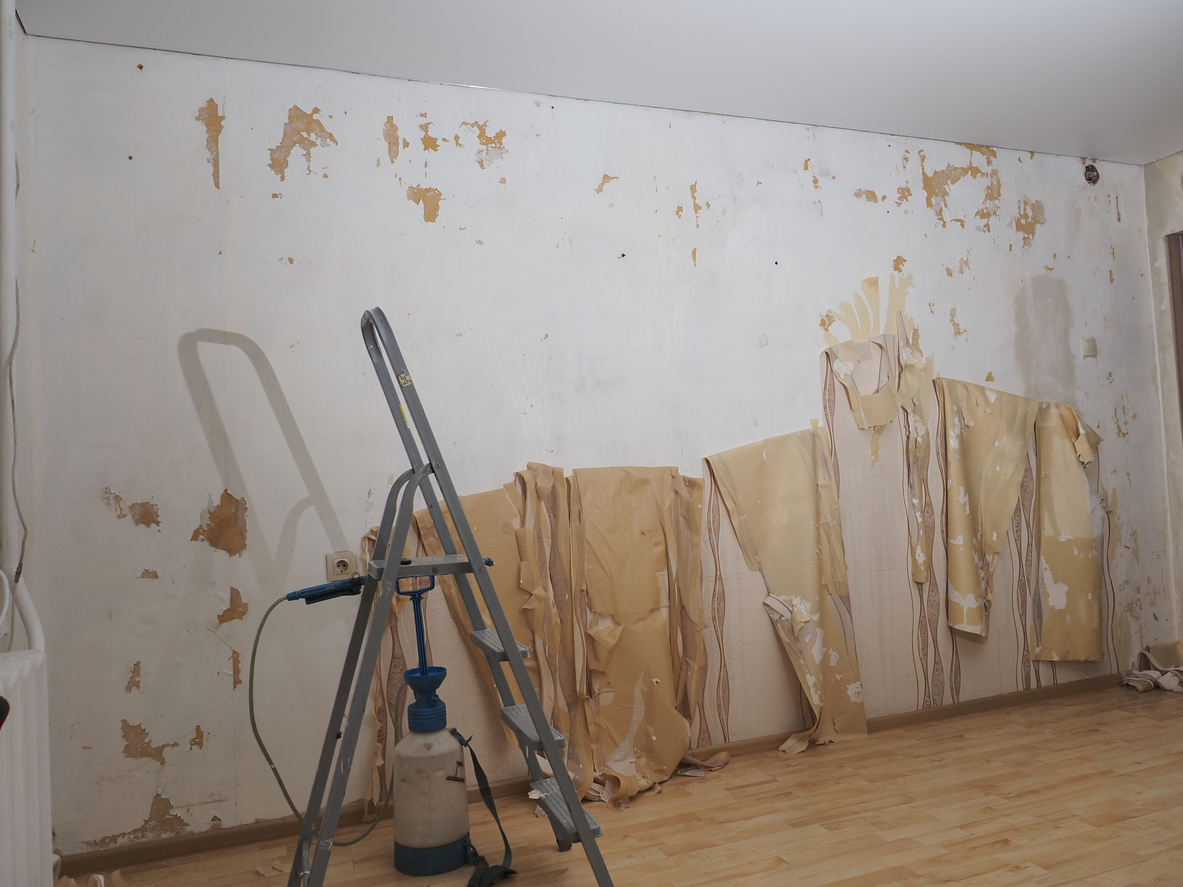
Wallpaper and wallpaper adhesives manufactured prior to 1980 may contain asbestos, especially if the wallpaper has a vinyl finish. Intact wallpaper is best simply left alone or painted over. If the wallpaper is torn, cracked, or curling, however, you may want to have it professionally tested and replaced with a more up-to-date wallcovering.
RELATED: Guide to Buying Older Homes by Decade
7. Wall and Ceiling Insulation
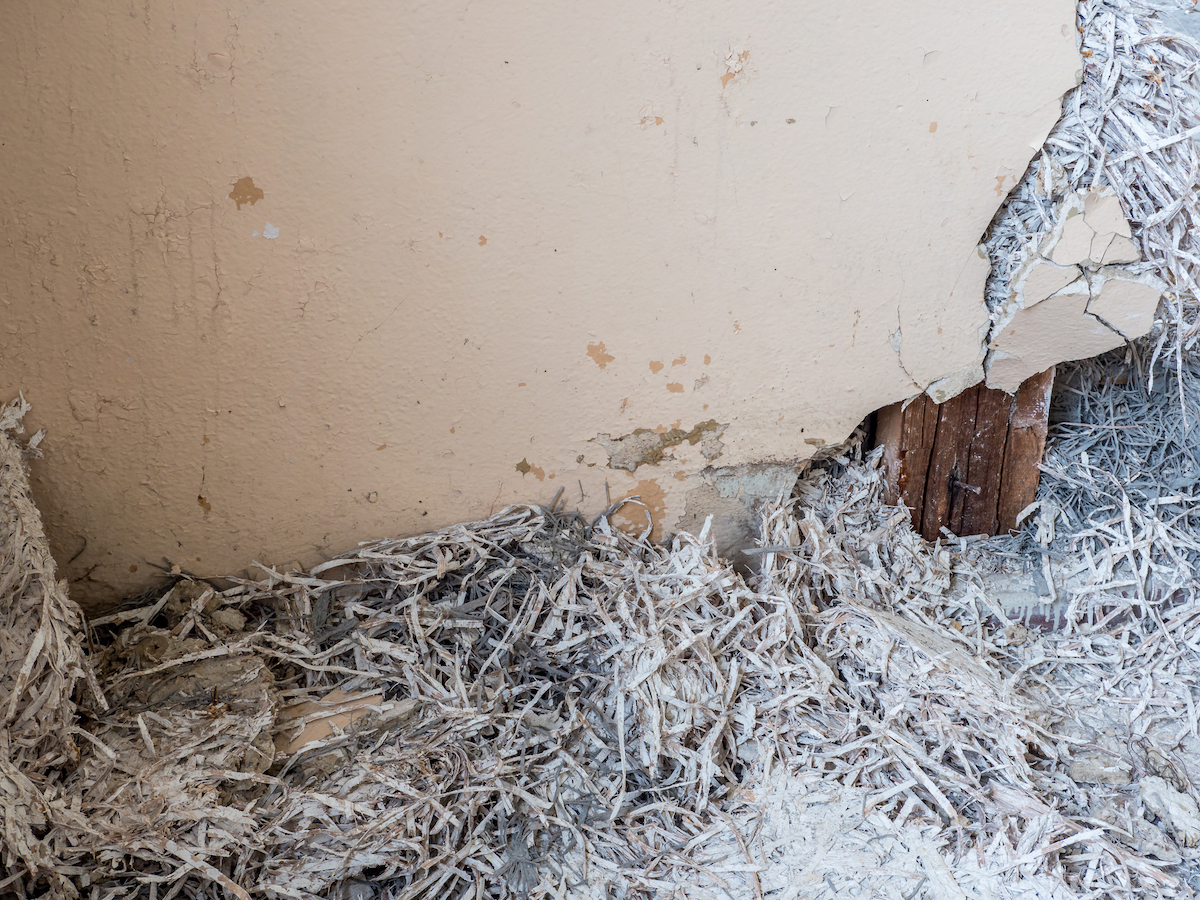
Asbestos lurks in the wall and ceiling insulation of many homes built from the 1930s through the 1950s. If there’s no damage to the walls or ceilings and the insulation isn’t loose or visible, it’s better left untouched. Call an inspector if you plan on remodeling or if you notice any cracks or other damage on the walls or ceilings.
RELATED: Solved! What Does Asbestos Insulation Look Like?
8. Furnaces and Boilers

Because asbestos resists fire and heat, it was commonly used in the gaskets, insulation, and surrounds for furnaces, boilers, stoves, and fireplaces. If you’re in the market for a new furnace or other appliance, you may want to check with an asbestos professional before disturbing your old one.
RELATED: Factors and Considerations That Go Into Asbestos Removal Cost
9. Curtains and Fabrics

Believe it or not, people once paid top dollar for curtains and draperies that contained asbestos. The heat-resistant, flame-retardant fabrics were marketed as the best way to protect families from house fires, and they dampened outside noise to boot. Many consumers also purchased asbestos pads or blankets to cover the heating elements on the stovetop. It goes without saying that if you encounter any of these products in your home, they should be removed, properly disposed of, and replaced with modern, non-asbestos-containing alternatives.
RELATED: Lose the Drapes: 17 Ways to Dress a Window Without Curtains
10. Artificial Logs and Embers
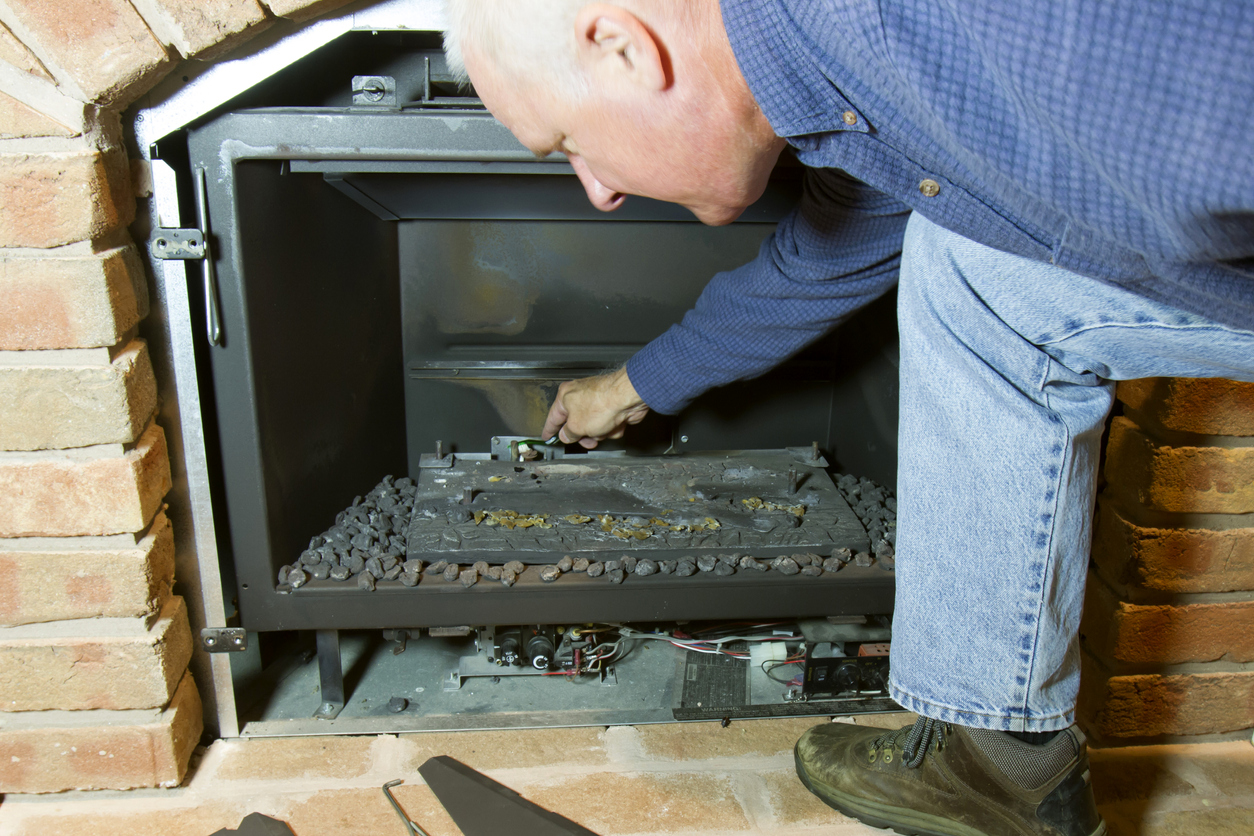
In 1977, the Consumer Product Safety Commission banned “artificial emberizing materials”—simulated ashes and embers made of asbestos—that were used in gas fireplaces to mimic the glow of a burning fire. If you have an old gas fireplace and live in a home built before the late 1970s, have your fireplace tested by a reputable professional, and replace the logs and embers—or the entire fireplace—if necessary.
RELATED: Gas vs. Electric Fireplace: What’s the Difference?
11. Electrical Components
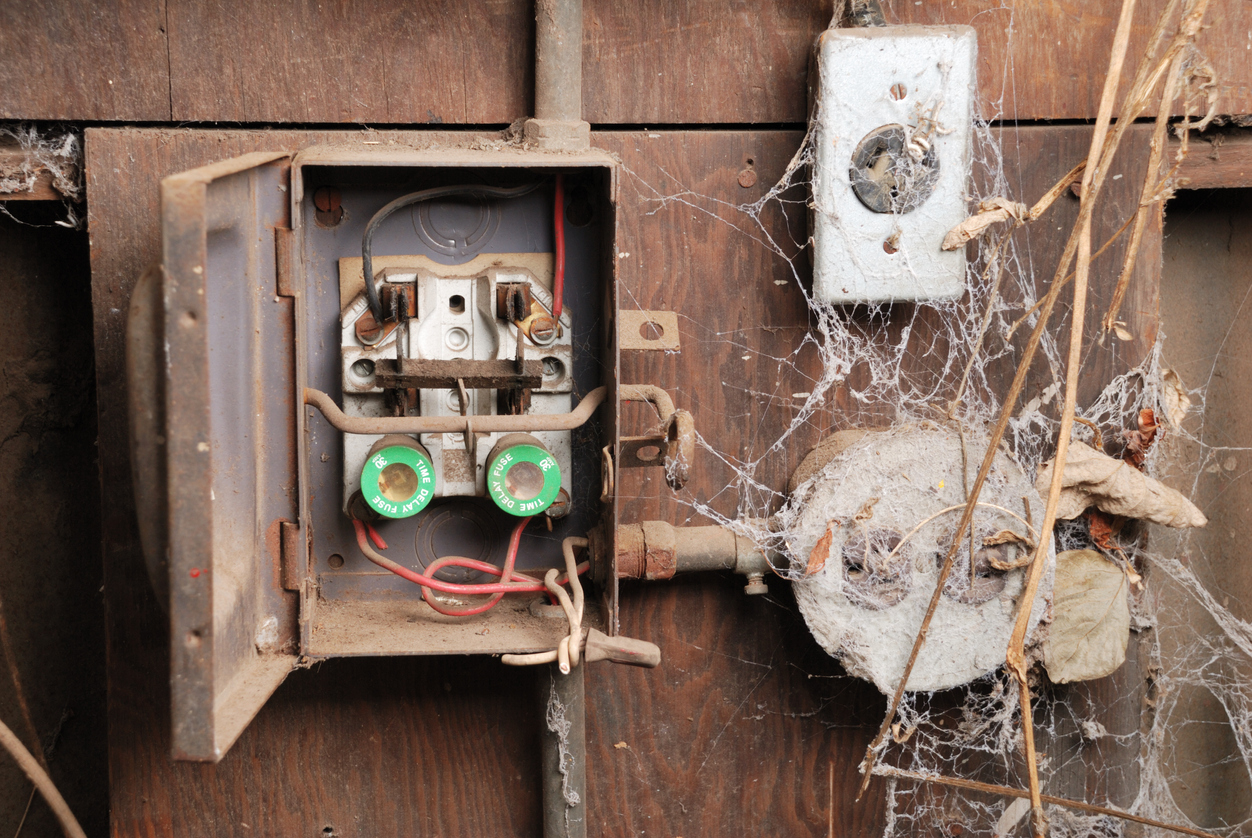
Asbestos may be found in the insulation for old electrical wiring, liners for recessed lighting, and backing panels and linings of fuse boxes. With normal use, none of these items should pose a risk, but when it’s time to replace them, check with your municipality regarding appropriate disposal.
RELATED: 8 Warning Signs of Dangerously Outdated Electrical Wiring
12. Vintage Housewares and Small Appliances
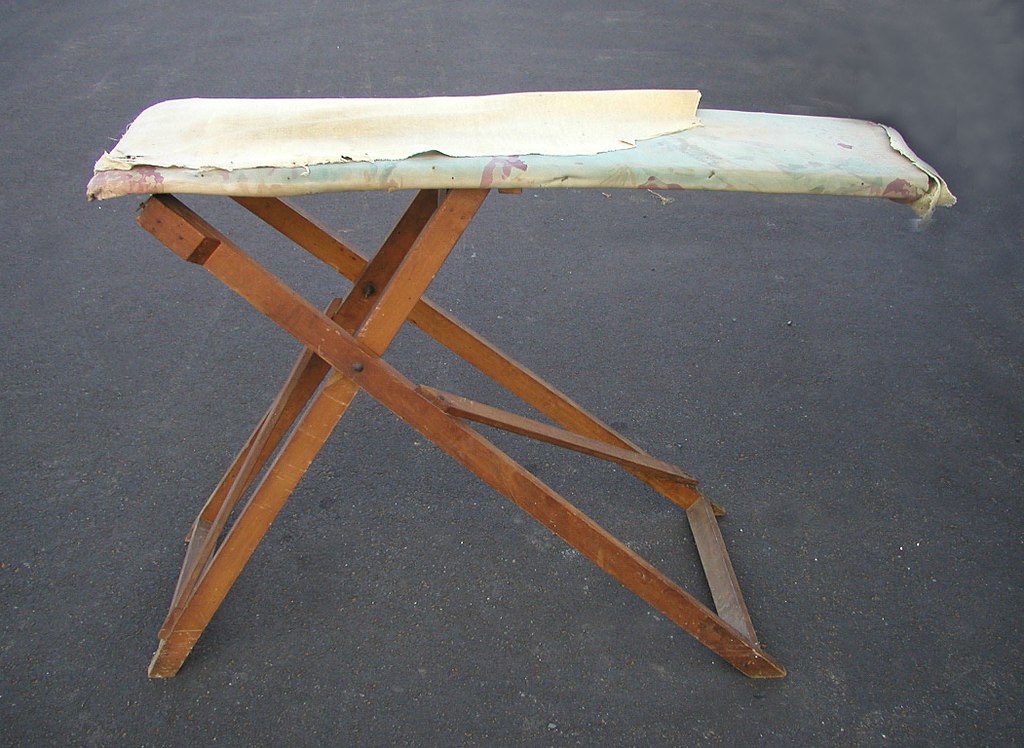
If you haunt the antique shops in search of vintage housewares, be aware that some old toasters, handheld hair dryers, hot pads, slow cookers, ironing board covers, and other heat-producing or heat-shielding products used to contain asbestos. These older products are fine for decoration, but avoid using them. If they are damaged, frayed, or otherwise worn, dispose of them. Consult your local sanitation department for proper disposal.
RELATED: 17 Vintage Kitchen Features We Refuse to Abandon
13. Major Appliances
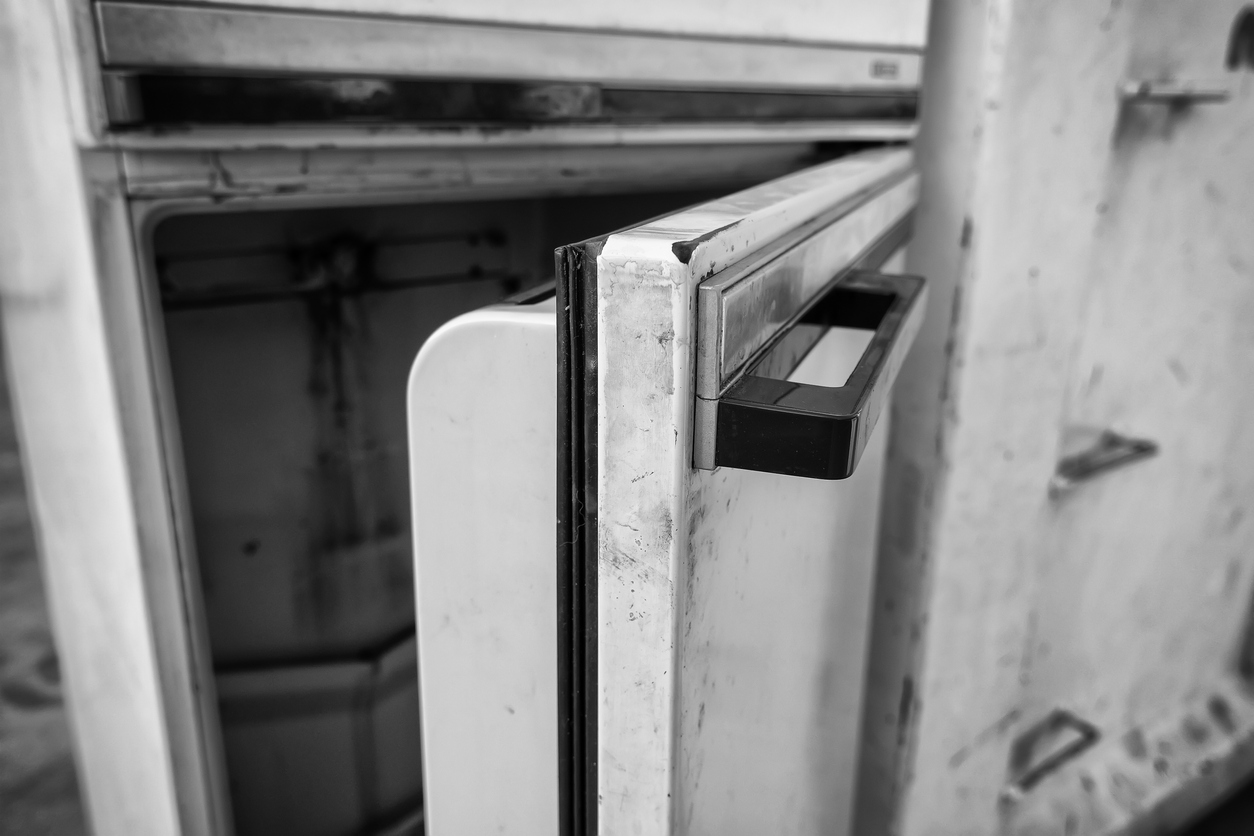
Older appliances, including washing machines, dryers, ovens, and even some refrigerators, may have asbestos in gaskets and insulating materials. Even if an old appliance contains asbestos, it doesn’t pose a risk as long as it’s used properly and in good working order. Do not, however, attempt to repair an old, asbestos-containing appliance. Either dispose of it or contact the manufacturer for guidance.
14. Fireplaces
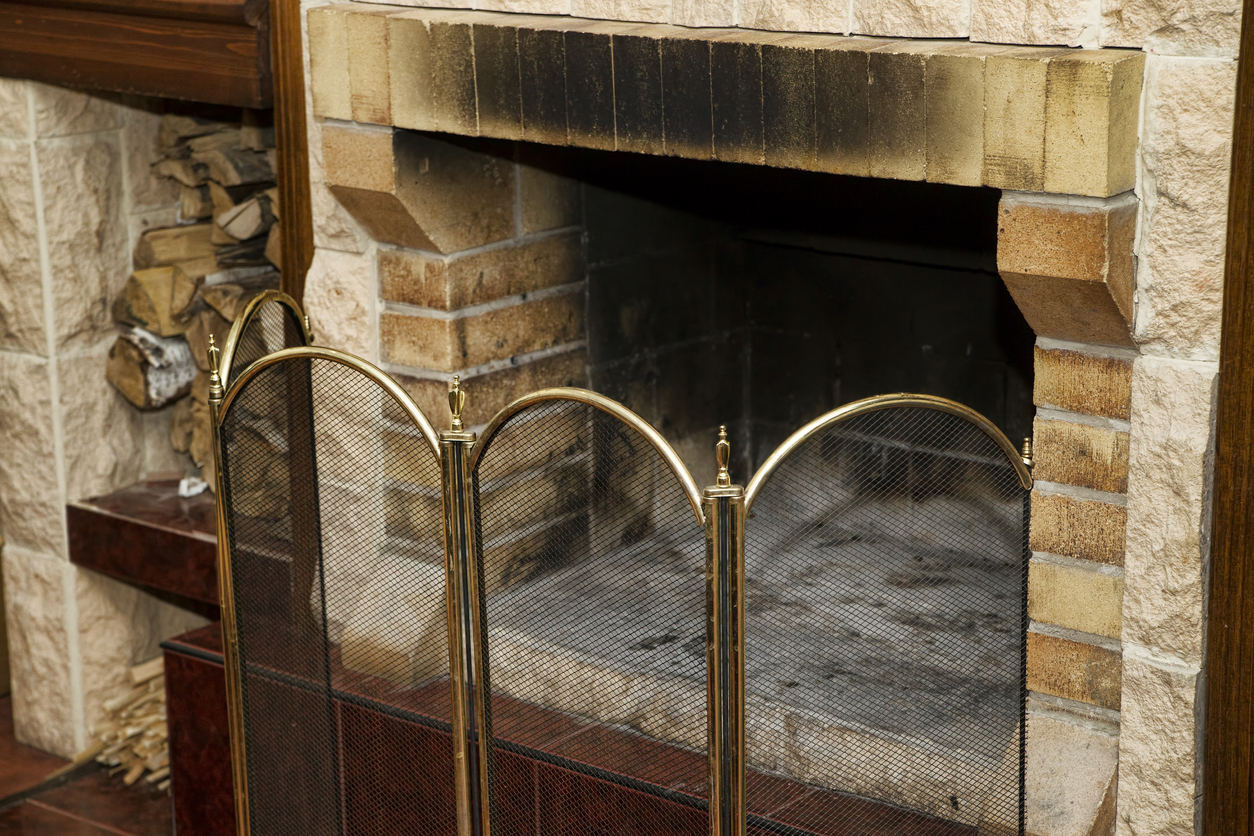
Asbestos was used in chimney flue liners as well as in some firebrick and mortar, so it’s possible that a fireplace built before the late 1970s could contain asbestos. If the materials are in good repair, it’s best to let them be. If, however, they’re deteriorating, or if you’re planning a renovation that will affect them, call in professionals for testing and demolition.

